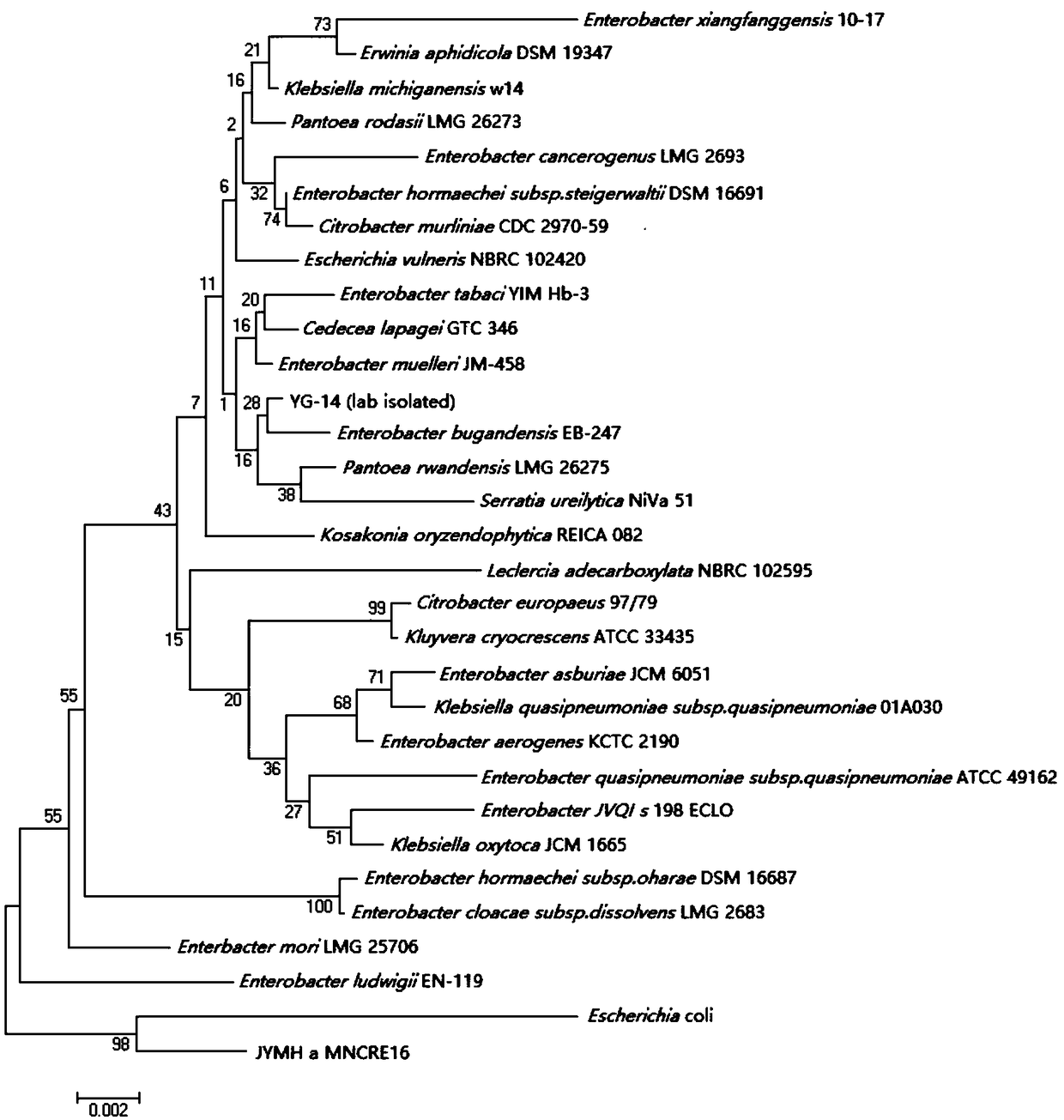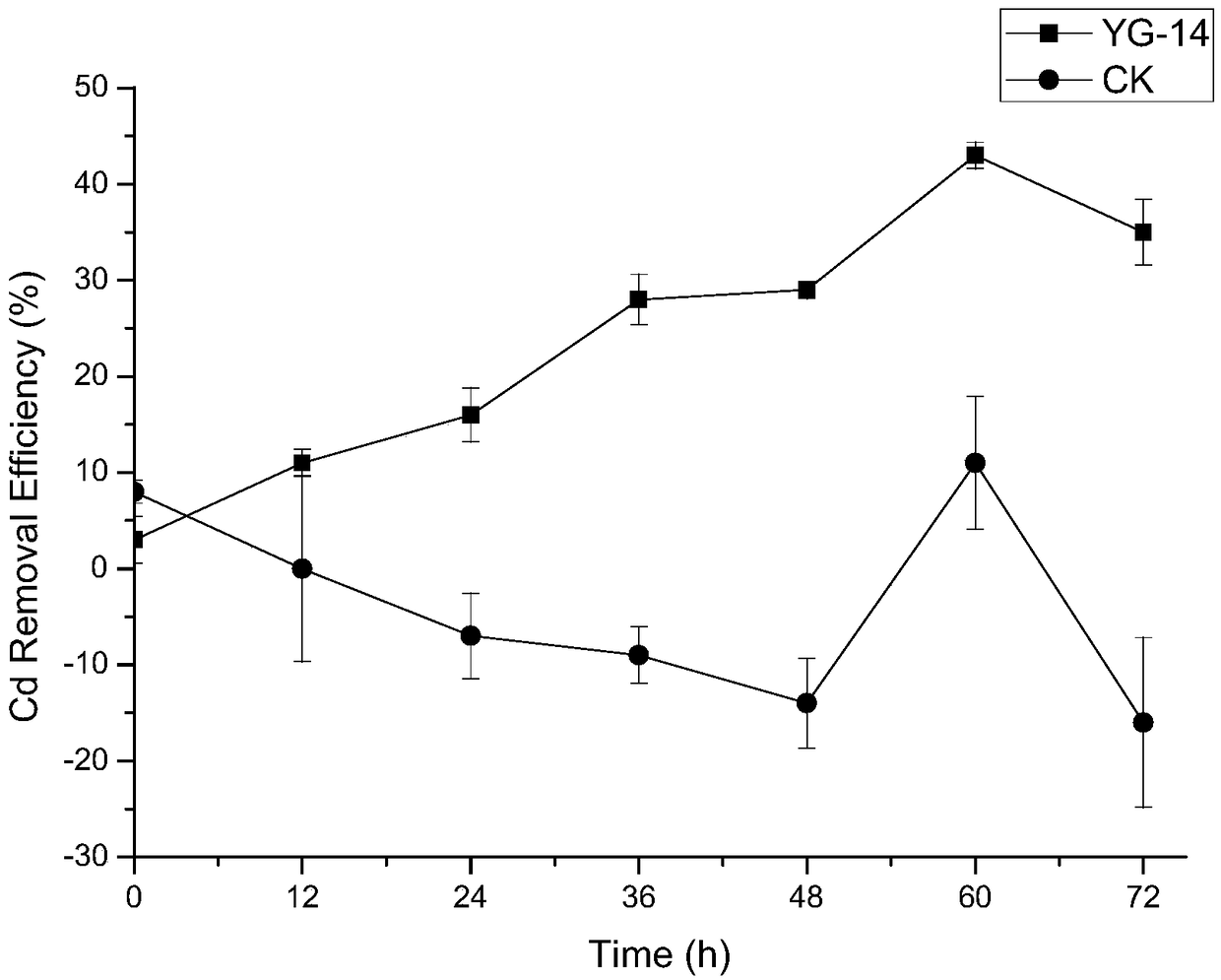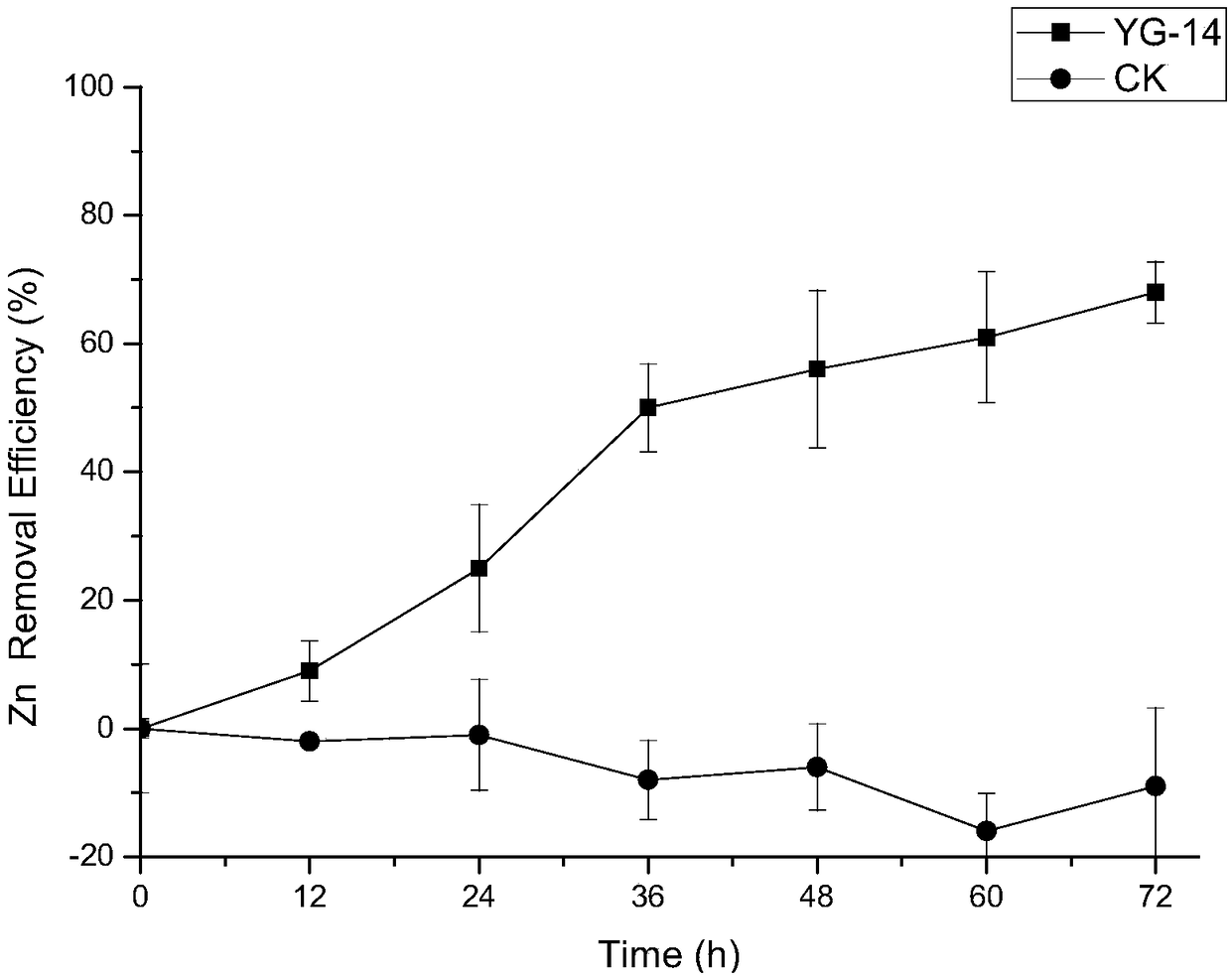Heavy metal tolerant populus tremula endogenous enterobacter YG-14
A technology of heavy metals and Enterobacteriaceae, applied in the direction of bacteria, microorganisms, microorganisms, etc., to achieve the effect of efficient removal of heavy metals
- Summary
- Abstract
- Description
- Claims
- Application Information
AI Technical Summary
Problems solved by technology
Method used
Image
Examples
Embodiment 1
[0023] Example 1: Screening of heavy metal-tolerant poplar endophytic bacteria
[0024] 1. Isolation and purification of endophytic bacteria from plants:
[0025] The fresh poplar samples were sterilized on the plant surface, dried and placed on the mannitol soybean medium (soybean powder 20g / L, mannitol 20g / L, agar powder 20g / L, pH value 7.2±0.2), and cultivated at 30°C , when the endophytic bacteria grow out, combined with streak separation method in LB solid medium (peptone 10g / L, yeast extract 5g / L, sodium chloride 10g / L, agar powder 18g / L, pH5.6-5.8 ), the temperature is 30°C, the culture time is 1-2 days, and the separation is carried out until the pure culture is obtained.
[0026] 2. The verification of the experimental effect of poplar surface disinfection, the specific implementation method is (one of the following two methods can be selected):
[0027] Method 1: Take 200 μL of washing water from the last step of poplar surface disinfection and evenly spread it on ...
Embodiment 2
[0029] Example 2: Biological identification and strain morphological characteristics of bacterial strains
[0030] 1. Morphological characteristics of the strain
[0031] (1) Morphological characteristics of colony population: Streak inoculation of YG-14 monoclonal colony into LB solid medium, place the plate upside down in a constant temperature incubator, and incubate at 30°C for 10-18 hours to form mucus-like yellow colonies. Under the condition of LB liquid culture (temperature 30°C, pH=6, shaker 170r / min), YG-14 is in the lag phase at 0-3h, enters the logarithmic growth phase at 3-18h, and then enters the stable phase and decay phase.
[0032] (2) Individual morphological characteristics of the bacteria: Gram staining was carried out on the YG-14 strain, and observation by an optical microscope showed that the strain was a short rod-shaped, Gram-negative bacterium.
[0033] 2. Strain 16S rRNA analysis
[0034] Bacterial Genomic DNA Extraction Kit (Shanghai Jierui Bioeng...
Embodiment 3
[0041] Example 3: detection of strain heavy metal tolerance
[0042] The tolerance level of strains to cadmium, lead and zinc heavy metals was detected by dilution quantitative spotting method and plate coating method respectively, and the minimum inhibitory concentration of the strain was obtained.
[0043] 1. Colony dilution method to screen heavy metal-tolerant bacteria: OD 600 ≈1 strain fermentation broth, dilute it to OD with saline 600 ≈0.1, 0.01, 0.001, the same amount of the fermented broth of the four concentration gradients was applied to the solid medium of the LB strain added with heavy metals lead nitrate, zinc chloride, and cadmium chloride, and the four strains were obtained by screening. The colony YG-14 that can grow in all concentrations.
[0044] 2. Determination of the minimum inhibitory concentration by plate coating: the microbial plate coating method was implemented on the solid medium of LB strains added with different concentrations of heavy metal le...
PUM
| Property | Measurement | Unit |
|---|---|---|
| concentration | aaaaa | aaaaa |
| concentration | aaaaa | aaaaa |
| concentration | aaaaa | aaaaa |
Abstract
Description
Claims
Application Information
 Login to View More
Login to View More - R&D Engineer
- R&D Manager
- IP Professional
- Industry Leading Data Capabilities
- Powerful AI technology
- Patent DNA Extraction
Browse by: Latest US Patents, China's latest patents, Technical Efficacy Thesaurus, Application Domain, Technology Topic, Popular Technical Reports.
© 2024 PatSnap. All rights reserved.Legal|Privacy policy|Modern Slavery Act Transparency Statement|Sitemap|About US| Contact US: help@patsnap.com










